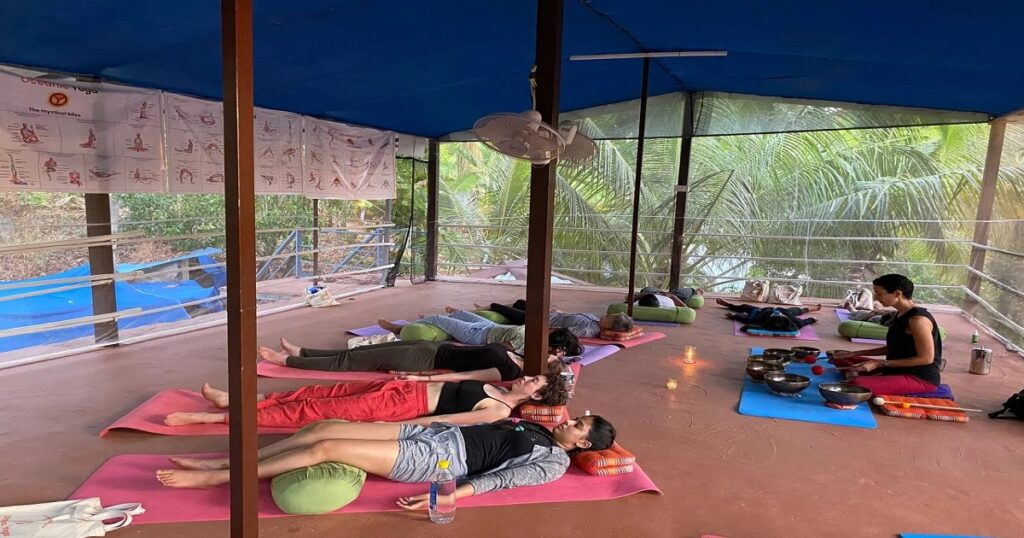Most people think they’ve figured out hot yoga. Just sweat, stretch, repeat. But that’s only scratching the surface. The real issue? Many overlook the depth of benefits and risks that come with this powerful practice. Hot yoga isn’t just about a heated room—it’s a full-body reset that many still misunderstand.
According to a study published in the Journal of Clinical Psychology, it significantly reduces stress and promotes long-term well-being. In this article, we’ll walk you through eight surprising facts that will make you rethink everything. Read till the end—you’ll see why more people are shifting how they view this practice.
It’s Not Just About Flexibility
Hot yoga isn’t only for the already-bendy crowd. In fact, it’s heated environment helps muscles warm up faster, reducing injury risks and making movement smoother.
- Boosts joint mobility
- Ease muscle tightness
- Reduces stiffness from sedentary habits
More than stretching, it also improves balance and posture, which many beginners forget. You don’t need to be a gymnast. You just need consistency. With regular practice, your body rewires how it handles pressure and physical tension. That’s a benefit most people never expect from stretching routines alone.
Sweat Isn’t Always Detox
Most assume sweat is the body pushing toxins out. Here’s a surprise: sweat cools the body. It doesn’t detox the liver or kidneys—that’s not how biology works.
Yes, hot yoga makes you sweat buckets. But the real detox comes from improved breathing and circulation. The postures help stimulate your lymphatic system, which plays a direct role in flushing out waste. This internal reset is often more impactful than the outer sweat-fest. So next time you’re drenched, know your body’s cleansing itself from the inside out, not just through pores.
Hydration Begins the Night Before
Think drinking water an hour before class will do the trick? Think again. Hydrating for hot yoga should start at least 12 hours before you hit the mat.
- Aim for 2–3 liters of water throughout the day
- Add electrolytes for better absorption
- Avoid caffeine-heavy drinks before class
Dehydration during class can lead to headaches, dizziness, and muscle cramps. Make hydration part of your daily routine—not a last-minute scramble. Long-term results show up when the body performs at its peak state, and water is central to that outcome.
Temperature Isn’t Always 105°F
Many believe every hot yoga studio sticks to 105°F. Not true. Temps vary from 90°F to 108°F depending on the class format and studio policy.
Let’s break this down:
Bikram vs. Vinyasa Hot Classes
Bikram yoga follows a strict format—26 poses done in the same order at 105°F with 40% humidity. It’s repetitive but deeply structured. Vinyasa, on the other hand, is fluid and dynamic, with sequences that vary by instructor. It’s often set in slightly cooler rooms. Both styles offer benefits, but how your body responds to each can vary widely.
Heat + Humidity = Intensity
Many people underestimate the role humidity plays in how the heat feels. A 95°F room with 60% humidity can feel more intense than a dry 105°F space. The combination of heat and moisture affects heart rate, breathing, and endurance. So when someone says the room felt “extra hot,” they’re likely feeling the humidity more than the temperature itself.
Body Response to Different Temps
Every body reacts differently to heat. Some people thrive in 105°F while others feel dizzy or fatigued. That’s normal. Your hydration, fitness level, and even what you ate that day all factor in. Understanding your limits doesn’t make you weak—it helps you train smarter. It’s all about tuning into your body and letting it guide the intensity.
What to Ask Before Joining
Before you commit to a studio, ask detailed questions. What’s the room temperature? What’s the humidity level? Are instructors certified specifically in hot yoga? This kind of prep helps prevent burnout or injury. If you’re searching “Yoga classes near me,” go beyond location. Ask the right questions so you step into a class that supports your goals and limits.
Not All Studios Are Built the Same
Ventilation, flooring, and instructor training—these all affect your experience. That’s why studio choice matters more than people think.
- Ventilated rooms reduce dizziness
- Flooring matters for safety and stability
- Instructors trained in hot yoga keep you safe
Some studios have medical-grade air filtration. Others might only crank up the thermostat. Look for places like Inlet Yoga, which focuses on both comfort and safety. A great studio elevates your practice. A bad one risks your health. Know where you’re stepping into.
Calories Burned Are Often Overestimated
You’ve heard the buzz: “Hot yoga burns 1000 calories!” Not exactly. Actual burn averages around 300–450 calories per session.
Weight, Duration, and Intensity
The calories you burn in hot yoga depend on several variables: your weight, how intense the class is, and how engaged you are in the poses. For example, holding Warrior II with full muscle engagement burns more than coasting through it. While heat plays a role, it’s really your effort and consistency that make the biggest difference.
Muscle Toning vs. Fat Burn
Hot yoga excels at toning muscles—especially your core, legs, and shoulders. It builds strength in a low-impact way, which makes it ideal for long-term fitness. Unlike high-intensity workouts, it’s not primarily a fat-burning machine. However, when paired with cardio and a clean diet, hot yoga enhances your body’s shape and function.
Better Metabolism, Long-Term Gains
Practicing hot yoga regularly helps improve metabolic function. The heat encourages circulation, oxygen flow, and digestion, which impact metabolism. Over time, this leads to steady fat loss and energy regulation. It’s not a crash-diet approach; it’s a lifestyle rhythm that rewires how your body stores and uses energy. Think of it as a long game with lasting payoff.
Your Mind Benefits as Much as Your Body
Too many overlook how hot yoga transforms mental health. It increases mental clarity, emotional balance, and reduces anxiety.
Yoga is now used in PTSD recovery and anxiety management. Why? Because the practice forces your mind to focus inward, breathe deeper, and hold through discomfort, mental training that bleeds into daily life. Even private yoga sessions have shown results for anxiety reduction in studies. It’s therapy for the mind, in motion.
Hot Yoga Can Boost Your Beach Game
Practicing indoors has perks, but take it to the shore, and results spike. Enter: Beach yoga studio magic.
- Sand builds stabilizing muscles
- Outdoor oxygen sharpens focus
- Nature adds calm to chaos
Practicing on the beach demands more from your body. Your feet sink, your core works harder, and your lungs open up. Plus, the Inle Yoga philosophy encourages blending calm with challenge—nature supports that. Think better balance, deeper connection, and fresher energy. Take your mat outside when possible.
Final Words:
Hot yoga isn’t what it seems at first glance. It’s stronger, deeper, and smarter than just sweating on a mat. With the right approach and studio, you gain more than flexibility. You gain focus, flow, and long-term wellness that sticks around far beyond the final pose.
Ready to try hot yoga?
Join Inlet Yoga for expert-led hot yoga classes at Inlet Yoga Studio.
FAQs:
1. Is hot yoga safe for beginners?
Yes, but stay hydrated and go slow. Let your body adjust to the heat gradually.
2. What should I wear to hot yoga?
Lightweight, moisture-wicking clothes are best. Avoid cotton—it retains sweat and gets heavy.
3. Can I eat before a hot yoga class?
Yes, but keep it light. A banana or smoothie 90 minutes before is ideal.
4. How often should I do hot yoga?
2–3 times a week is effective for most people. Consistency matters more than intensity.
5. What if I feel dizzy during class?
Take a break. Sit or lie down. Listen to your body—never push through discomfort.



